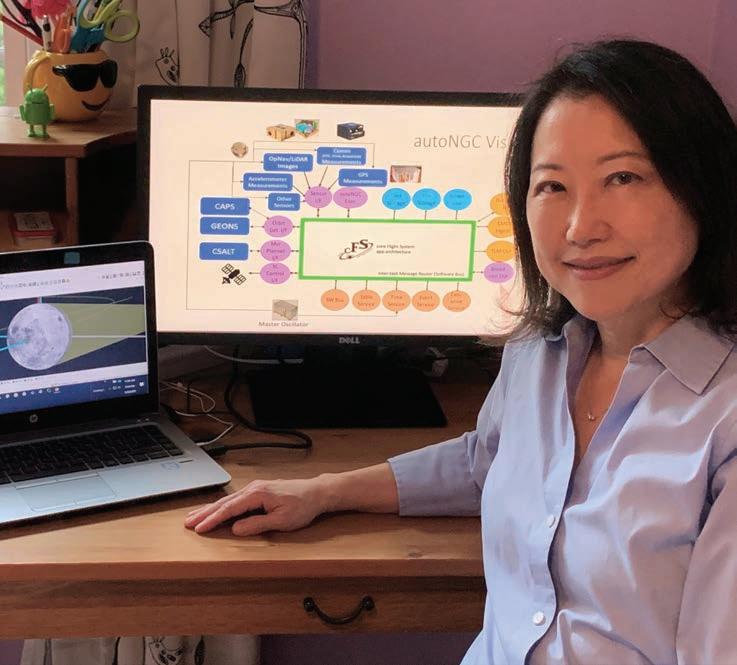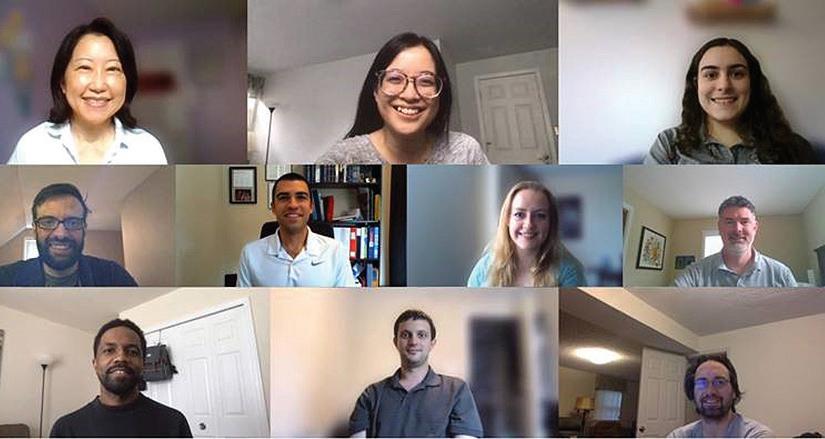
4 minute read
Building an Adaptable, Self-Driving Navigation Guidance and Control System
Increased onboard autonomy won’t completely cut ground controllers out of the mission equation, but it certainly will save time and precious resources particularly for small satellites and pintsized CubeSats operating near Earth, around the Moon, and near small bodies.
Goddard engineer Sun Hur-Diaz is leading an R&D effort, known as autoNGC, short for autonomous navigation, guidance, and control. It integrates hardware and NGC software into a system that would support a wide range of spacecraft. Key to this system is its plug-and-play architecture compatible with the Goddard-developed core Flight System framework, or cFS. The autoNGC architecture would allow spacecraft designers to swap out sensors and software components, provided everything is cFS-compatible.
Advertisement
Navigation, guidance, and control are the basic functions of maneuvering a spacecraft in orbit or any vehicle, Hur-Diaz said. Navigation is knowing where the spacecraft is and planning maneuvers for it. Guidance is figuring out how to get from one place to another, and control covers the series of commands that execute those maneuvers.
The core of the system is an executive, software that directs the resources and makes everything work together, Hur-Diaz said. “It can use any application or hardware that can be adapted to work on a cFS framework; so, it is also scalable.”
An adaptable autoNGC system would enable remote sensing, LunaNet communication network nodes, and distributed data-collection swarms that are the future of near-Earth space science and Artemis-era explorations of the Moon, Mars, and beyond, she said.
Leverages IRAD-Developed Technologies
Hur-Diaz and her team are building on software created for the Goddard Enhanced Onboard Navigation System (GEONS), a technology originally developed for NASA’s Magnetospheric Multiscale (MMS) mission. GEONS determines the locations of MMS’s four spacecraft and predicts where they will be in the future (CuttingEdge, Spring 2015, Page 2).
It also advances a previous Internal Research and Development (IRAD)-funded effort that demonstrated the executive function of the autoNGC platform through a laptop-based simulation. This year’s IRAD goal is a closed-loop demonstration, including hardware, to advance the autoNGC concept beyond the software proof of concept.
“Earth-based ground network assets are a finite resource. With the expected increase in near-Earth, cislunar, and lunar activities, capabilities like autoNGC, which reduce that burden, will be essential to executing successful missions,” said Jason Mitchell, Advanced Communications and Navigation Technology Division head for NASA’s Space Communications and Navigation (SCaN) group as well as the agency systems capability leader for Communications and Navigation.

During the pandemic, autoNGC team members met virtually to continue developing their system: (From top, left to right) Sun Hur-Diaz, Victoria Wu, Sarah Dangelo, Michael Romeo, Noble Hatten, Lauren Schlenker, Steven Hughes, Sean Semper, Andrew Liounis, Samuel Price.
“The in-situ capability offered by autoNGC enables missions with rapid dynamic updates, such as rendezvous, proximity operations, and multi-craft constellations, especially for long-duration, or extended missions,” said Cheryl Gramling, head of Goddard’s Navigation and Mission Design Branch. “Performing these functions onboard is a gamechanging enabler for the science missions Goddard and NASA are planning.”
The team plans to simulate a lunar orbiter, using a board developed for the Modular Architecture for a Resilient Extensible Smallsat (MARES), a follow-on to the Goddard-developed Dellingr CubeSat (CuttingEdge, Winter 2020, Page 10). They are also developing a navigation camera for use in multiple mission scenarios, including possible lunar orbiters for the LunaNet communications network and a lunar lander.
For planning, the autoNGC will baseline the Collocation Stand-Alone Library and Toolkit (CSALT) — a general optimizer that efficiently plans orbital maneuvers for all mission phases and mission types.
“Where possible, we are trying to leverage technologies that have been developed already,” Hur-Diaz said. “cFS has become the standard, and can be readily included into a variety of areas.”
Turns on a Dime
Hur-Diaz is ensuring a flexible autoNGC architecture to take advantage of available components and allow for future advances in hardware and software, she said.
“We could potentially integrate a different camera, a different GPS,” she said. “We’re even considering a NavCube integration,” she added, referring to a navigational capability that merges Navigator GPS with SpaceCube, a reconfigurable, very fast flight computer. “That’s the thing about making it plugand-play and cFS-based — we can select options that best meet mission needs.”
The system will also incorporate fault-management algorithms to detect errors, isolate faults, and recover from upsets without a human controller. “It’s a huge effort to bring all these things together,” Hur- Diaz said. “Trying to think of everything that could go wrong is impossible, so we’re prioritizing what is likely.”
Targeted for 2024
The autoNGC technology is currently at a technology-readiness level of three (TRL-3), meaning it’s still early in its development. To get closer to TRL-6, which means the technology could be incorporated into flight missions, Hur-Diaz and her team plan to implement the software on a flight-like processor this year.
The autoNGC team plans to be flight ready by 2024, in time for the first Artemis launches, Hur-Diaz said. To get there, she and her team have identified a possible low-budget flight test. She wants to book time on the International Space Station, specifically on the Robotic Refueling Mission-3 platform and camera, which already operates on cFS. The demonstration would allow the team to test aspects of its system in space at low cost, she said.
CONTACT
Sun.H.Hur-Diaz@nasa.gov or 301.286.4259






